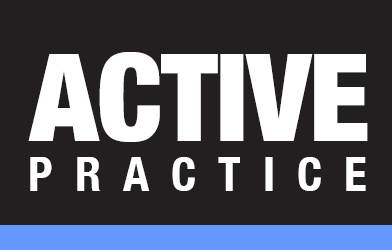Do you need a different To-Do system?
/To-do management is a bear. Life keeps getting more complicated. To keep on track, you need some sort of system, but nothing is perfect.
Understanding the strengths and weaknesses of different to-do systems can help you discover one that works for you. Try different methods until you land on one that’s okay for you—not necessarily great, but okay.
Electronic lists
may become unmanageably looooong
Electronic To-Do List Apps
Maybe a different app on your phone will be a better fit than the one you tried. Apps that make many “best-of” lists include:
· Todoist. Full-featured, clean; $48/year.
· TickTick. Best free app with limits of nine lists and 99 tasks per list; $35.99/year for more views and high limits.
· Any.do. Good free plan; paid plan is expensive at $60/year.
Things 3. For dedicated Apple users; $49.99 for Mac, $9.99 for iOS. [Most practice management systems also have a decent task management feature that supports collaborating with others.
Electronic To-Do Lists: Pros and Cons
Electronic to-do lists have a lot going for them:
They don’t get lost. They’re on your phone. They’re synced to your computer. They’re backed up in the cloud.
They stay neat. They let you shuffle tasks around. Mark an item done, and it’s out of sight, not bugging you, yet still findable.
They track when you did something. You can look back and feel a sense of accomplishment.
They can play well with others if you want them to. On a team, you can share the workload. Teammates watch your back. You watch theirs.
But . . .
Electronic to-do lists have a fatal flaw for some people:
They remember everything. You add new tasks faster than you check off old ones. You get discouraged, overwhelmed. It becomes painful to open your list, so you don’t. You start writing on sticky notes. . . .
If this sounds familiar, a paper system might fit you better.
Paper To-Do Lists Methods
You may already have a to-do list style that suits you pretty well, yet you still find it frustrating. Maybe a few tweaks would make a big difference. Or maybe you’d be happier with a very different approach.
For inspiration, look at some paper systems to power up your productivity:
· Bullet Journal. Combination of rapid logging and symbols used by Ryder Carroll.
· Dash/Plus. Quick capture and prioritization using dashes and pluses by Patrick Rhone.
Getting Things Done. David Allen’s GTD system: Capture, clarify, organize, review, complete.
· Strikethrough. Simply writing tasks and crossing them out by Mike Vardy.
· GSD, Getting Sh*t Done by Bill Westerman. A streamlined system if Getting Things Done by David Allen is overkill for you.
Paper To-Do Lists: Pros and Cons
Advantages of paper:
If you have a creative streak, you might like to:
Write some tasks bigger.
Draw arrows to connect items.
Circle things.
Use colorful highlighters.
You may be motivated by an aesthetically pleasing paper form.
You can keep your list in your field of view at your desk, cuing you to return to it by its presence.
When you rewrite your list, your brain engages in improving your descriptions, including changes to the original tasks. (You can do that electronically, too, but are less likely to.)
But . . .
Paper to-do lists have flaws:
They’re pretty much stuck in one place (though sometimes you can tote them around) and get left behind.
They can’t be backed up automatically.
They don’t share well with others.
Where Does That Leave You?
Either electronic or paper lists could work for you. Check some out. Pick one. It just needs to be okay, not perfect.
Be aware of the drawbacks of your list. The best way to counter them is with (shudder) routine.
Make a habit of spending ten minutes at the beginning of your day, every day, on your list. Also, make a habit of updating it at the end of your day. You might wind up avoiding that end-of-day time because you don’t want to be reminded of what you didn’t do today.
To counteract end-of-day to-do list avoidance, set a reminder to check your list at, say, 3:00 each afternoon. Identify the top two things you still need to cross off today. Do them! Now, when you hit the end of the day, you know you took care of at least two big ones.
Congratulate yourself!






